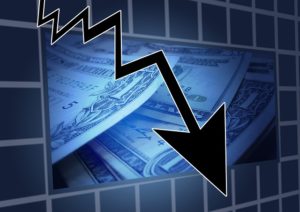Economic Indicators Lag Reality
Several times in recent years, I made offhand remarks about the supposed economic recovery of the past few years—and how I doubted we were experiencing such a turnaround.
“If someone advertised a plant opening that would hire 500 workers, 5,000 people would show up,” I said one time.
Turns out I underestimated the ratio. I say that after seeing a recent story about the new Hard Rock Casino in Atlantic City. (Ironically, Hard Rock has reopened the Trump Taj Mahal, but that’s a comment for another day.)
The eye-popping number that attracted my attention: the casino had received 50,000 applications for 4,000 jobs.
So, instead of the 10-to-1 figure I had cited, here was a real-life 12.5-to-1 example.
Unemployment Low?

Still, I struggle to believe that the economy is as booming as we are led to believe.
Especially when, a few weeks after the unemployment news, I learned that a relative is about to be downsized out of his contract soon.
Apparently, the college whose computer networks he has been helping maintain is cutting expenses. Just like our county’s school system, which is reassigning all its librarians.
They decided it was better to save money than have someone direct students in the necessary tasks of better understanding books and research (a penny-wise and pound-foolish decision if I ever saw one).
Granted, there are pockets of prosperity, as this story about the Permian Basin shale-boom shows. In west Texas, unemployment is so low everything from restaurants, grocery stores and county government struggle to find enough workers.
Distrust of Statistics
I have harbored a healthy distrust of Uncle Sam’s leading economic indicators ever since the onset of the Great Recession.
I still remember in mid-2008, when the folks I call the “Washington Poo-bahs” were arguing when the recession had started.
“I can tell you,” I thought after listening to a radio news story about the dispute. “It started in November of 2007. That’s when my work started to decline and my income with it.”
Imagine the smile that crossed my face a few months later when I saw a story where economic experts declared they had pinpointed the start of the recession: November of 2007.
Questioning the News

For that matter, I seriously doubted the news that the recession ended in 2009 when I saw a continuing softness in my business for another three years.
I think there is a primary reason for doubting the traditional unemployment percentages and other numbers coming out of Washington, D.C. They have yet to catch up with life in the 21st century.
Take the presence of the “gig economy,” a phenomenon responsible for the sinking fortunes of New York cab drivers and stories about the people working three jobs to make ends meet.
The New York Times recently ran a story about the Bureau of Labor Statistics concluding the old-fashioned job remains king.
Yet, as one who has been self-employed for most of the past 35 years, I can’t help wondering how Uncle Sam tracks we entrepreneurs.
For anyone who relies on traditional measurements and unemployment statistics, I would ask where those 50,000 people came from when the Hard Rock Casino advertised 4,000 job openings.


